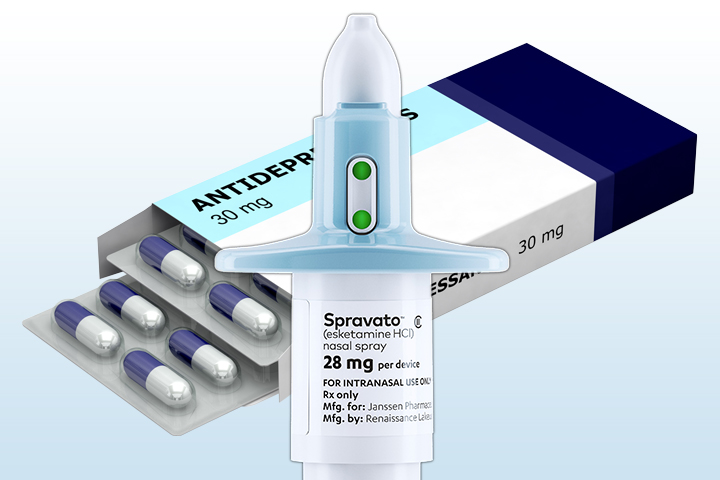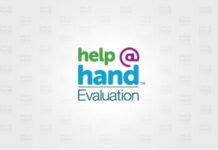A recent article published in Psychotherapy and Psychosomatics examines the health risks of esketamine nasal spray for treatment-resistant depression. Through an analysis of adverse events reported to the FDA, the authors found several adverse events related to the use of esketamine nasal spray, such as dissociation, sedation, feeling drunk, completed suicide, and especially suicidal and self-injurious ideation.
The international team of researchers, led by psychiatrist Chiara Gastaldon at the University of Verona’s Department of Neuroscience, Biomedicine and Movement Sciences, write:
“Esketamine marketing authorization triggered a vivid debate and many concerns, mainly because of the lack of convincing evidence on its efficacy and safety, including the risk of misuse and suicide. Currently, evidence on safety is almost entirely based on the development programs and approval trials,” the authors write.
“A pooled analysis on the safety profile of esketamine, based on data from the approval trials, found that it was significantly less acceptable than placebo and that the risk of dissociation was 7 times higher than placebo, with approximately one-fourth of patients treated with esketamine reporting severe dissociation during treatment.”
 Esketamine, a mind-altering medication related to the club drug ketamine or “Special K,” was approved to treat suicidal behavior this year, after being approved for treatment-resistant depression in 2019. Some scholars are critical of the profit-based pharmaceutical motivations behind the development of esketamine, while others question the drug’s legitimacy as a miracle cure for depression.
Esketamine, a mind-altering medication related to the club drug ketamine or “Special K,” was approved to treat suicidal behavior this year, after being approved for treatment-resistant depression in 2019. Some scholars are critical of the profit-based pharmaceutical motivations behind the development of esketamine, while others question the drug’s legitimacy as a miracle cure for depression.
Some research suggests that relapse is common and that esketamine offers little in comparison to placebo. Other studies suggest that it is effective for depression and that the positive effects can last at least one month.
The current study analyzes esketamine-related adverse events (AEs) submitted to the FDA’s Adverse Event Reporting System (FAERS) between March 2019 and March 2020.
“Post-marketing safety data” collected by the FDA is considered an important source for gaining knowledge of drug-related AEs. The authors analyzed 2,274 esketamine-related AEs from 962 patients. 46% of patients were female, 29.6% were male, and 24.3% were unspecified. The authors also looked at other factors involved, such as age, weight, the types of AEs (“serious” versus “non-serious”), antidepressant polypharmacy, and co-prescription of other psychiatric drugs.
“Disproportionality” was used to determine association with esketamine. Disproportionality examines whether “the proportion of AEs of interest is greater in patients exposed to esketamine (cases) versus not exposed (non-cases),” with non-cases here referring to reports of other drugs.
79% of AEs were reported by healthcare professionals, while consumers reported 20.1%.
The most frequently reported AEs were:
- Dissociation (9%)
- Sedation (7%)
- Drug ineffectiveness (5%)
- Nausea (3%)
- Vomiting (3%)
- Depression (2%)
- Suicidal ideation (2%)
- Anxiety (2%)
- Increased blood pressure (2%)
- Dizziness (2%)
- Product dose omission (1%)
- Feeling abnormal (1%)
“Safety signals” were detected for several of these AEs. When esketamine reports were compared against common antidepressant “venlafaxine,” aka Effexor XR, suicidal and self-injurious ideation stood out as having a high ratio of reports.
Females were more likely to experience serious adverse events versus non-serious events, and the same was true for those receiving higher doses (84mg) compared to lower doses (56mg). Examples of reported serious events were completed suicide, dissociation, and suicidal ideation, whereas non-serious events included anxiety, drug inefficacy, and nausea. Individuals taking multiple other drugs were also more likely to experience serious adverse events.
The authors noted several additional highlights of their research. First, reports for esketamine-related AEs doubled per month in 2020 versus 2019. They note that “notoriety bias”—the fact that esketamine has had a lot of popular momentum and awareness behind it—may have an impact here, but that safety concerns existed before this research as well.
Second, the authors detected “rare AEs” not reported by regulatory trials of esketamine or reported only in <5% of patients, such as self-injurious ideation, depressive symptoms, panic attack, paranoia, and mania.
Third, they found significant disproportionately for several of the AEs, such as 26-27% of esketamine patients reporting dissociation.
The fourth highlight relates to the high ratio of reports for suicidal and self-injurious ideation. The relative risk of reporting suicidal ideation was 24 times higher than for other drugs in general and 5-9 times higher than for Effexor XR. However, this should be understood in the context of treatment-resistant depression; it is difficult to tease apart whether the drug itself is causing the increased ideation or if the sample of patients using esketamine had more severe depressive symptoms than those using other drugs.
Finally, drug abuse/misuse is a genuine possibility with esketamine. Some AEs reported symptoms such as “euphoric mood, dissociation, feeling drunk, and hallucinations,” which the authors compare to gabapentin as well as regular ketamine.
The authors noted several limitations to the study, such as the inability to establish causality with this kind of post-marketing related research, limitations in relying on reports, notoriety bias, and lack of a denominator or baseline reference in relation to the larger population.
They conclude:
“This study showed that the esketamine safety profile in the real-world population might be slightly different from that described in regulatory trials, and therefore further data from clinical practice would be required to better understand the safety profile of esketamine and provide an evidence-based framework for rational prescription. More real-world research is urgently needed, including pragmatic clinical trials, observational studies, and individual-participant meta-analyses on rare and unexpected AEs.”
****
Gastaldon, C., Raschi, E., Kane, J. M., Barbui, C., & Schoretsanitis, G. (January 01, 2021). Post-marketing safety concerns with esketamine: A disproportionality analysis of spontaneous reports submitted to the FDA adverse event reporting system. Psychotherapy and Psychosomatics, 90(1), 41-48. (Link)















Just prior to my ongoing romance with orthomolecular medicine, I was involved with hallucinogenic drugs and substances, one early project being finding antidotes to deliria brought on by PCP/ketamine type drugs, which will leave you truly delirious if some ER type doc gives you an antipsychotic “antidote” as treatment ( I found that l-glutamine’s far better than these drugs, even though it’s never been considered an antipsychotic substance).
Report comment
I guess Pharm decides what dose? Not the client?
It matters not, since no studies are reliable or honest information and ALL studies omit that they are drugging something they have no understanding of, and omit that they are experimenting with chemicals on brains. It is after all, an experiment with every single person.
Try the non drug, non pathologizing, non denigrating ways of helping people. Leave therapy by the roadside and provide real support, real social involvement, real homes, real steps they can achieve at their own pace. Don’t give people stuff that can lead to more trouble.
Report comment
They need to make their minds up. Ketamine is a street drug. Everybody knows it can be hamful. It doesn’t change because they call it something else.
Maybe it’s not as bad as pharmaceutical drugs – I don’t know.
People might say that feelings are not something to use drugs for – though there’s a natural tendency to comfort.
Report comment
Dopamine stimulants (examples include meth, cocaine) and GABA drugs (examples include alcohol, and benzos) are street drugs regularly prescribed as “safe and effective” not only to tens of millions of adults but to millions of children.
Psychiatry doesn’t care about cognitive dissonance. The simply fabricate some reason why deadly addicting street drugs that ruin lives are necessity medicine just like insulin if they are taken daily by “mentally/chemically/biologically defective” people.
Report comment
A corollary to this is when shrinks find out if you’re using substances like vitamin B3 and/or mega-ascorbate. Then the shrink goes into contortions about how you’re destroying yourself with these venomous substances, maybe topping his lecture with symptoms of horror, as though you’re going to turn into a werewolf before his very eyes (before you tear him to pieces, of course).
Report comment
Esketamine is different from Ketamine. They are not the same drug. Ketamine has Esketamine and another chemical compound.
The corporation selling Esketamine did three trials. Esketamine had worse results than placebo in two and slightly better results in one. The most pro-Esketamine biased studies couldn’t even find the drug was better than placebo(2).
Let’s analysis the Ketamine studies used to claim “miracle” improvement. In these studies 1 month after use the HAM D depression scale improves from around 23 to 10. A 13 point improvement. In clinical trials placebo follows an 8.5 point improvement(1). Note that in clinical trials the “placebo group” is put in withdrawal. Meaning the actual placebo effect is likely higher than the 8.5 point improvement.
Ketamine, 1 month after use has a 4.5 point improvement over a placebo group going through withdrawal.
Other psych drugs produce at most a 2 point improvement in short term corporate biased studies. Non-corporate biased long term studies find these drugs increase depression by 50-100%(3).
These approval, praise, and evidence for ketamine looks exactly like what occurred with Serotonin drugs.
(1) https://www.frontiersin.org/articles/10.3389/fpsyt.2019.00407/full
(2) https://www.google.com/amp/s/khn.org/news/fdas-approval-of-new-depression-drug-overlooked-red-flags-in-its-testing/amp/
(3)
https://www.madinamerica.com/2018/03/do-antidepressants-work-a-peoples-review-of-the-evidence/
Report comment
I don’t like to say “I told you so,” but…
https://www.baltimoresun.com/opinion/op-ed/bs-ed-op-0317-miracle-drug-20190313-story.html
Report comment
Low dose generic affordable oral ketamine helped save my life. I don’t mind if people are turned off by bio/chemical strategies for health, and I don’t mind if ketamine is seen as a street drug. I’ve been around the block a few times, and I recommend ketamine for some people (along with nutrient supplements). This method transcends the expensive, time-consuming, and clinical over-control of the nasal spray and IV. Generic ketamine not only can’t be re-patented and studied in the same ways that patents promise, but its long history in anesthesia and pain control tell us much. Many studies of additional ‘off-label’ uses for depression, etc. have been done over the last 2 decades, between prescribers and ‘patients’.
Don’t be fooled, we need not pursue this research solely through the lens of esketamine, it’s marketing, and corporate shape-shifting and rose-tinted glasses with $-signs in them. There’s already been much research, experimentation, and anecdotal and clinical experience, if only the authors dig deeper, well outside the esketamine black hole.
Remember: so far, ketamine (with my other modes) has saved my life, and I am not a white crow in a flock or ‘murder’ of black crows. I am simply a crow that did not pluck his feathers out and break his beak since generic affordable oral ketamine was prescribed by an innovative and exploratory prescriber.
I recommend the book Ketamine for Depression, which, though imperfect, is highly revealing and trail-blazing:
https://www.amazon.com/Ketamine-Depression-Dr-Stephen-Hyde/dp/1503509559/ref=nodl_
Report comment
Categorising “dissociation” as an AE for esketamine seems absurd – isn’t that exactly what the drug is meant to do? It would be interesting to study whether patients experiencing “dissociation” short-term have better or worse longer-term treatment outcomes.
I’d be far more worried about long-term downsides, especially if patients after treatment manage to get their hands onto street ketamine. We had a ketamine ‘epidemic’ in the 2000s here in the UK, some use was purely recreational but a minority of people were using it to self-medicate against depression, often taking very large amounts on a daily basis.
Some really bad outcomes, example here:
https://www.vice.com/en/article/av4njj/ketamine-slowly-ruins-your-bladder-and-kills-you-863
I’m dismayed at how discussions about medical esketamine routinely ignore the vast body of experience – including clinical experience – amassed by ketamine users and professionals treating them in the UK in the 2000s.
Report comment
Till Bruckner,
I see that you only point out negatives to using ketamine, as one would given only its misuse and risky complications. But are you aware that there are positive and constructive uses and applications, as well? Here I’m referring to psychiatric or other off-label uses and not anesthesia in war or veterinarian medicine, for example, which have long been accepted and valued. There are many examples of safe chronic use for pain conditions and not just acute use in battle or for dogs.
I’d point out that disassociation occurs at middle to higher levels of ketamine, not lower. It’s clear that you are unfamiliar with the spectrum of ketamine since you think that disassociation is simply something it’s supposed to do. The dissociation is probably one area that benefits its anesthetic uses, but my guess is there’s potentially some therapeutic use of mild disassociation for psychiatric reasons too, such as is found in carefully run IV clinics.
Illegal use helps show that people are desperate (sometimes due to the failing of the ‘system’) and that legal and regulated markets of some sort or another, even if only medical, could reduce crime and risk. These are in addition to the pleasurable/party element that gets mixed in. Decriminalizing drugs while providing a strong social safety net and reliable education would, in the long-term, save both individuals and society money, pain, and stigma. Low to mid-dose use through a prescriber has not shown to lead to unusual levels of addiction-seeking behavior, often quite the opposite, and especially compared to benzodiazepines, opiates, and those sorts of things.
Report comment